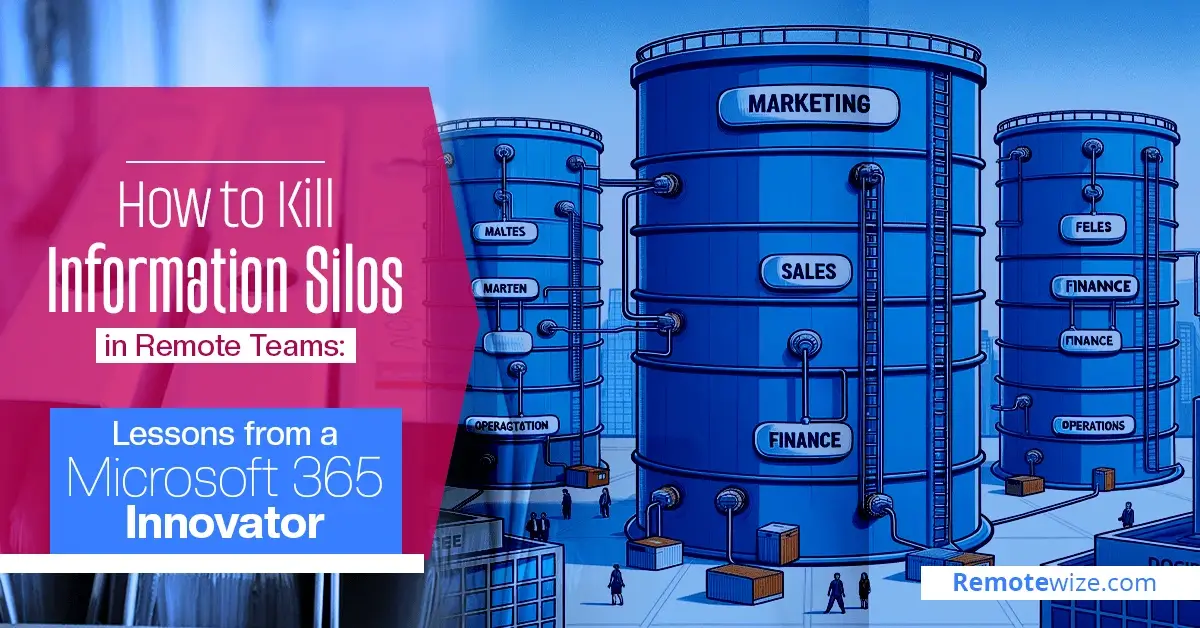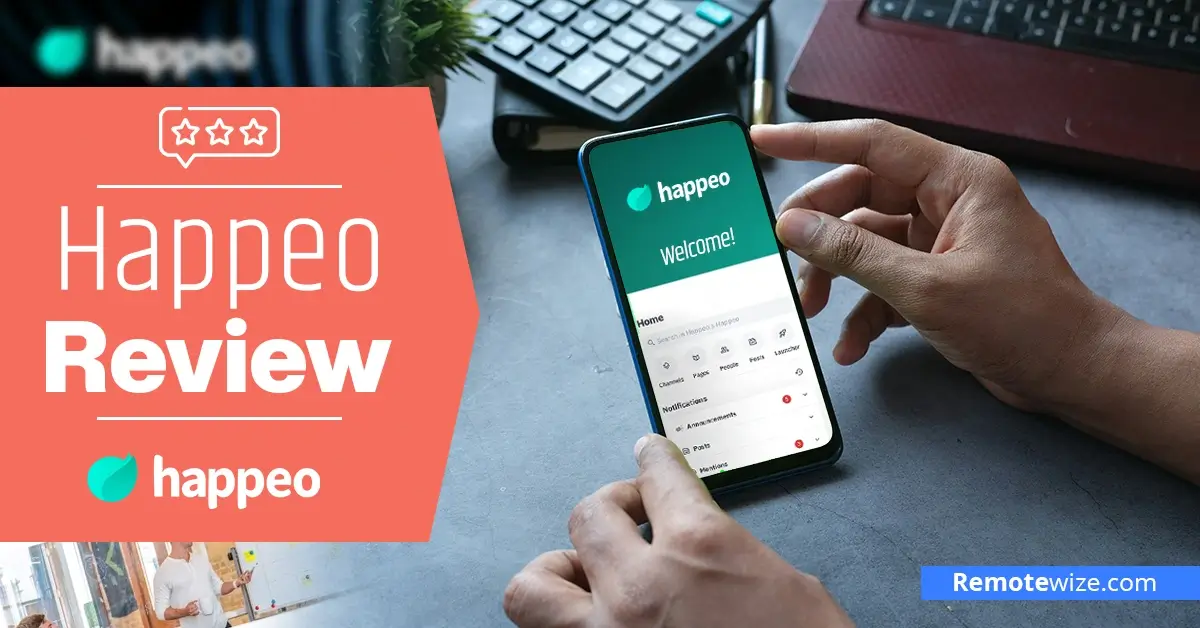There’s no doubt that the traditional nine-to-five work week is slowly fading out. In its place, more and more businesses are adopting remote work models in which employees can work from anywhere in the world. Remote work will account for 25% of all professional positions in North America by the end of 2022, per Ladders report.
This begs the question, should you consider a remote work model for your business?
As a business, you should analyze your needs and objectives before jumping the bandwagon. Remember: not all departments and teams in your organization are fit for a remote work model. Further, transitioning from a traditional office setting to a remote work model can be a daunting task, as you can read in our remote work challenges guide.
In this article, we will cover key competencies that are necessary for a successful remote work model. Depending on the competencies your business currently possesses, it should be easy to determine whether it’s right to take the plunge or not. Strap in.
Main Remote Work Models
Remote work models can be a game-changer for a business running on the onsite work model. There are three popular remote work models that businesses can consider – full remote, hybrid remote, and distributed teams.
1. Full Remote
A full remote model is precisely what it implies; a model in which the entire workforce is based off-site. As per a study by Gallup, 16% of companies are fully remote globally.
In this model, employees work from home or any other location outside of the office. This is the most flexible type of arrangement as it offers employees the most freedom in regard to where and when they work from.
Businesses that have fully embraced this model include Buffer, Automattic, and InVision. The biggest advantage of a full remote work setup is that businesses can hire the best talent from anywhere in the world irrespective of geographical boundaries.
On the flip side, the lack of physical interaction among employees can sometimes lead to communication issues. A business can consider a full remote model if the roles and tasks aren’t time and location-specific, which is often the case with creative or knowledge-based jobs.
3. Hybrid Remote
Business is not a one size fits all, and the same goes for the remote work model. If a business is struggling to make the full remote model work for them, they can consider a hybrid approach which is a mix of onsite and off-site working.
In a hybrid remote model, some employees work remotely from home or any other location outside of the office while others operate from an office or co-working space on a regular basis. Hybrid remote work can also mean all employees are allowed to work in-office certain days of the week.
This type of arrangement can be beneficial for businesses as it allows them to have a mix of in-office and remote workers, giving them the best of both worlds.
A business can consider a hybrid remote model if the roles and tasks can be done either remotely or onsite. This setup is especially ideal if some roles are better suited for an onsite environment while others can be performed remotely. This model is best suited for businesses that are looking to transition from an onsite to a remote work setup.
The advantage of this model is that it offers the best of both worlds – the benefits of an onsite work environment, such as face-to-face interactions and the benefits of a remote work setup such as a larger talent pool to choose from.
The only challenge with this model is that it can be challenging to manage both onsite and off-site workers simultaneously.
Is My Business Model Appropriate For A Remote Workplace Setting?
With the rapidly changing work dynamics, employers and employees alike are rapidly adapting to a new way of working. For many businesses, this has meant instituting a remote work policy for the first time.
Consider your business model and whether or not a remote work model would be feasible. Here are a few remote work eligibility factors to consider when determining if your business is appropriate for a remote work model:
Stage One: It’s About Workforce, Roles, Business Model
Every business is different, and the decision to allow employees to work remotely should be made on a case-by-case basis. When evaluating whether or not your business is appropriate for a remote work model, it’s important to consider your workforce, the roles within your company, and your business model.
Not every business is suited for a remote workforce. If your business relies heavily on in-person interaction or if you have a large number of employees, a remote work policy might not be feasible.
Consider the roles within your company and whether or not they can be done remotely. For example, customer service representatives or sales people might not be able to do their jobs effectively if they’re not in the office.
Your business model should also be taken into consideration when determining if a remote work policy is right for you. If your business model relies on in-person interactions or foot traffic, a remote work policy might not be the most ideal.
Questions you should ask yourself include:
- Is your business limited to specific ZIP codes?
- Do you have time and location-specific roles?
- Do you want an opportunity to capitalize off of a wider pool of talent?
- Do you want to embrace inclusion and diversity by removing the geographic barrier?
Stage Two: Workplace Culture
A remote workplace setting is not for every business, but it can be a great way to promote inclusion and diversity by removing the geographic barrier. When evaluating whether or not your business is appropriate for a remote work model, it’s important to consider your workplace culture.
A remote workplace setting might not be right for you if you have a company culture that relies heavily on in-person interactions or if you want to maintain a strict 9-5 work schedule. Consider these questions:
- Is your company culture based on in-person interaction?
- Do you have strict office hours?
- Do you want to promote inclusion and diversity by removing the geographic barrier?
Keep in mind you can navigate the negative impact of a remote workplace on company culture by encouraging employees to interact virtually. This could mean creating opportunities for employees to bond outside of work and maintaining open communication channels.
Stage Three: Business Outcomes
The end goal of any business is to achieve specific outcomes, and a remote workplace setting can help or hinder that goal. When evaluating whether or not your business is appropriate for a remote work model, it’s important to consider the potential outcomes of instituting a remote work policy.
When evaluating whether or not your business is appropriate for a remote work model, it’s important to consider the potential impact on your business outcomes. You should weigh the potential outcomes of a remote work policy before instituting one.
Potential positive outcomes of a remote work model include:
- Increased autonomy: When you focus on clear and specific outcomes rather than people’s time and space, office interruptions become a story of the past, and employee productivity can hit its full potential. Remote work allows employers and employees to focus their energy on the bottom line.
- Financial gain: Global Workplace Analytics deduced that for every employee who works from home half of the time, a company could save approximately $11,000 per year. For every employee. By supporting remote workers, companies can save on overhead costs, real estate costs, transit subsidies and continuity of operations. Many companies are already taking the leap to remote operations around the clock based on significant savings in these areas.
- Employee satisfaction & recruitment: A study by Owl Labs found that 89% of remote workers would like to continue working remotely, even after the pandemic. 72% of remote workers would leave their current job if it became office-only. A separate study conducted by Gallup found that employees who work remotely at least some of the time are more engaged and feel more connected to their organization. Being able to offer flexible work options is a great way to attract and retain top talent.
- Increased retention: In the same Gallup study, it was found that employees who work remotely at least some of the time are more engaged and feel more connected to their organization. A separate study by Global Workplace Analytics showed that offering flexible work arrangements increased employee retention by as much as 87%.
Stage Four: Employee Wellbeing
A workforce is only as strong as its weakest link, and that link is often the well-being of the employees. You should consider the potential impact of a remote work model on employee well-being before adopting one.
There are a few key factors to consider when evaluating the impact of remote work on employee well being:
- Access to resources: When employees work remotely, they may not have access to the same resources as they would in an office setting. This can include things like mentorship, professional development opportunities, and social interactions. Businesses should consider how they will provide employees with access to these resources if they switch to a remote work model.
- Work-life balance: One of the benefits of remote work is the potential for a better work-life balance. However, this can also be a double-edged sword. If employees are not given clear expectations or boundaries, they may feel like they are always working. This can lead to burnout and decreased productivity.
Consider how they will manage employee work-life balance if they switch to a remote work model.
- Mental health: According to the World Health Organization, mental health is “a state of well-being in which every individual realizes his or her own potential, can cope with the normal stresses of life, can work productively and fruitfully, and is able to make a contribution to her or his community.”
Mental health is an important part of employee well-being, and it can be affected by a number of factors, including work-life balance, access to resources, and social interactions. Businesses should consider how a remote work model might impact the mental health of their employees before instituting one.
How to Transition to Remote Work
Any form of change can be difficult, but if done correctly, it can be a smooth process. Here are a few remote work best practices to streamline the transition:
- Take a phased approach: Don’t try to transition your entire workforce to remote work overnight. Start with a small group of employees and gradually expand the program. This will give you time to work out any kinks in the system and make sure everyone is on board with the new model.
- Communicate the change: The first step is to communicate the change to your employees. Be clear about why you are making the switch to a remote work model and what benefits you’re targeting. Let your employees know what is expected of them and give them a timeline for the transition.
- Set up a remote work policy: Once you have communicated the change to your employees, you need to set up a remote work policy. This policy should include things like expectations, boundaries, procedures, and remote work software you’ll use. It is important to be clear and concise when creating your policy.
- Evaluate and adjust: After you have made the switch to a remote work model, it is important to evaluate and adjust as needed. Check in with your employees regularly to see how they are adapting to the new system. Make changes to your policy as needed.
- Consider a co-working space: If your employees are not used to working remotely, you may want to consider a co-working space. This can help them adjust to the new model and provide them with a place to go if they need a break from their home office.
Are You Ready For Remote Work?
Remote work is a growing trend in the business world. There are a number of benefits to a remote work model, including increased employee engagement and retention, improved work-life balance, and increased productivity.
However, there are also a few things to consider before transitioning to a remote work model, such as the impact on employee well-being, communication, and productivity. When transitioning to a remote work model, businesses should set clear expectations and provide employees with the resources they need to be successful.




